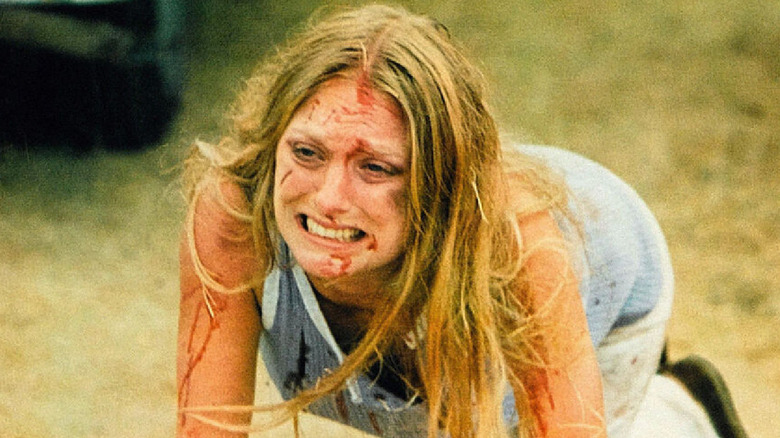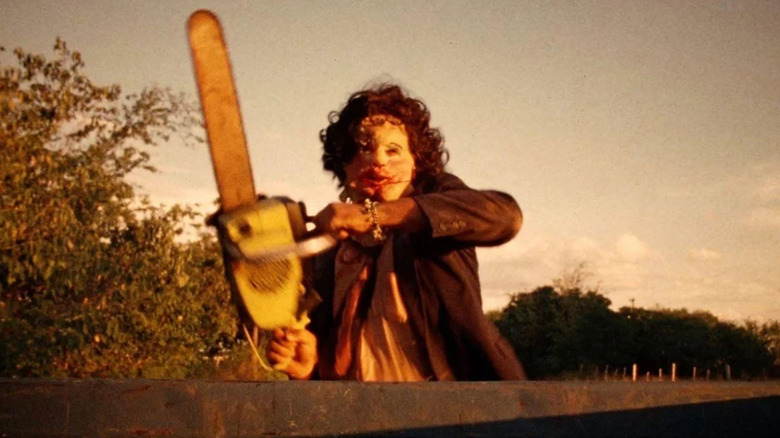Is The Texas Chain Saw Massacre Really A True Story?
In 1974, Tobe Hooper literally took a chain saw to genre cinema with what is now regarded as one of the greatest, most beloved horror movies of all time. And when "The Texas Chain Saw Massacre" sliced its way into theatres in maniacal fashion, the biggest draw for audiences was that, according to the movie, it was based on real events.
"The events of that day were to lead to the discovery of one of the most bizarre crimes in the annals of American history," the film's opening narration intoned, or so audiences were led to believe. The terror of watching a poor group of teenagers getting slaughtered in the Sawyer family household was made all the more traumatic thanks to the belief that this was actually true. Somewhere out in Texas there was a man in a leather mask dancing on a highway with blood on his hands and mind. Only there wasn't.
"An idyllic summer afternoon drive became a nightmare" only on film, but was spun as a true story in an effort to add even more scares to what became a classic of the horror genre. But where did Hooper's horror masterclass come from? Was there really any truth to Leatherface's legend and who was the person responsible? Well, it turned out that a notorious American serial killer did rev up "The Texas Chain Saw Massacre" and the entire franchise timeline that followed, as well as some other iconic monsters of movie history.
Ed Gein was the inspiration for Leatherface
Leatherface, the hulking, chain saw-wielding figure that would forever be known as one of horror's greatest monsters, was inspired by a real one who was discovered in 1957. Ed Gein, who was tagged with a variety of names including "The Butcher of Plainview" and "The Plainfield Ghoul," was a killer who shocked America to its core when the details of his grisly activities and murders were discovered. This all happened after one of his victims, Bernice Worden, had gone missing and was eventually discovered by police in Gein's home.
Worden had been found decapitated and strung up to resemble a deer, while elsewhere on the property the police discovered items made from human skin, including wastebaskets, corsets, leggings and masks. Additionally, there were also skulls found as decorations, replicated years later in Hooper's film and also the inspiration for some of the best setial killer movies of all time, including "Psycho" and "The Silence of the Lambs."
This, as well as the disturbing sensationalism of killers like Gein, sparked the creation of Hooper's masterpiece. The film was not only a statement on the glorification of violence, but also on the political climate of the United States and the limited information being given to the American public on scandals like the Vietnam War and the Watergate affair. While not literally "inspired by true events," "The Texas Chain Saw Massacre" was a furious response to America's political and cultural upheavals at the time, which still cuts through with a relentless ferocity even now.

